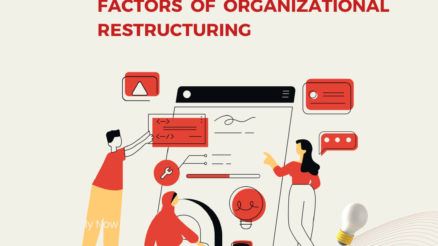Most people in the professional world have heard of agile organization – a newer way of structuring businesses and project teams that is said to be more efficient and effective than traditional methods.
But what are the advantages and disadvantages of an agile organization?
This post will explore both sides of the argument, giving you a better understanding of whether or not agile is right for your business.
Are you thinking of adopting an agile organization structure for your business? If so, it’s important to understand the advantages and disadvantages of doing so.
What is an agile organization?
Agile organizations are those organizations which have ability is to be more responsive to change and better able to adapt to the ever-changing business enviroment.
Agile organizations structure is different from that of traditional organizations. They’ve more decentralized structure, with teams working independently on different projects.
This allows for faster decision-making and greater flexibility when it comes to responding to new opportunities or challenges. Agile organizations are also known for their focus on innovation and customer satisfaction.
How to decide if an agile organization is right for you?
Agile organization can be a great way to manage projects, but it’s not perfect for every business and organization.
So how do you decide if agile organization is right for you? Here are some factors to consider:
The size of your company
Agile works best for companies that are smaller in size, as it can be more difficult to manage a large number of stakeholders in a traditional, waterfall-based structure.
The type of projects you’re working on
If your projects are more complex and require more upfront planning, agile may not be the best option for you. Conversely, if your projects are more fluid and require frequent changes, agile could be a good fit.
The culture of your company
If your company is very hierarchical or favors a top-down decision-making style, agile may not be the best option. On the other hand, if your company is more open to change and collaboration, agile could be a good fit.
Once you’ve considered these factors, you’ll be better equipped to decide if an agile organization structure is right for your business.
Advantages of an agile organization
There are many different advantages of agile organization, including:
1. Increased flexibility
Flexibility is one of the biggest advantages of agile organizations. Because they are organized into small, cross-functional teams, they can quickly adapt to changes in the marketplace or customer needs. This flexibility allows them to respond rapidly to new opportunities or threats, and pivot quickly if a product or service is not working as planned. In addition, the iterative nature of agile development means that feedback from customers can be quickly incorporated into ongoing development efforts, ensuring that the final product meets their needs
2. Quicker turnaround times
Agility also allows organizations to get products and services to market faster than their more traditional counterparts. By working in short sprints, teams can complete development tasks more quickly and move on to the next task without waiting for approvals from upper management. This allows agile organizations to bring new products and services to market much faster than their traditional counterparts.
3. Self Organization
Traditional organizations are typically hierarchical in nature, with clear lines of communication and authority. In contrast, agile teams are organized around the principle of “self-organization.” This means that team members are encouraged to take initiative and share their ideas freely.
As a result, agile teams typically communicate more frequently and openly than traditional teams. This can lead to faster decision-making and greater creativity. Additionally, self-organization can help to build trust and cooperation within a team. When team members feel empowered to take initiative, they are more likely to be engaged and invested in the project.
4. More frequent feedback
Agile organizations are able to get feedback from stakeholders more frequently and they are more responsive to feedback. Agile teams typically have daily stand-up meetings in which team members share what they are working on and identify any barriers to progress. This provides a regular opportunity for stakeholders to ask questions and give feedback. As a result, agile teams are able to get frequent and timely feedback from stakeholders, which helps them to deliver quick results.
5. Customer and Employee Satisfaction
In agile project, the customer satisfaction is one of the main advantages. Agile teams work closely with the customer to get feedback and make changes quickly if necessary. This close collaboration often leads to a better end product for the customer. In addition, agile methodology fosters a more open, collaborative environment, which can lead to happier employees.
6. Progress Visibility
Another advantages of agile organization is that it helps with progress visibility. Because projects are completed in small stages, agile teams can more easily track the progress of a project and make changes if necessary. This is a major advantage over traditional methods, which often require starting from scratch if any changes need to be made.
7. Increase Quality and Decreases Risks
Agile also has the advantage of increased quality and decreased risks. Because projects are completed in small stages, agile teams can more easily track the progress of a project and make changes if necessary. This is a major advantage over traditional methods, which often require starting from scratch if any changes need to be made.
Additionally, because agile teams communicate more frequently and openly than traditional teams, they are able to catch potential problems early on and prevent them from becoming bigger issues down the road.
Disadvantages of an Agile Organization
While there are many advantages of agile organization, there are also some disadvantages to consider, including:
1. Not suited for all projects
There are a number of reasons why an agile organization structure is not best suited to large projects. First, agile organizations tend to be flat, with relatively few levels of hierarchy. This can make it difficult for large organizations to maintain control and coordination among their employees.
Second, agile organizations are often highly decentralized, with decisions being made at the level of individual teams rather than by top management. This can lead to confusion and conflict within a large organization.
2. Requires strong team collaboration
Agile teams need to be able to work well together and communicate frequently. This can be a challenge for some teams, especially if team members are located in different geographical areas. The disadvantages of agile organization include the lack of face-to-face interaction, the need for frequent travel, and the difficulty of coordinating work across time zones.
In addition, team members in different geographical areas may have different levels of experience and expertise, which can make it difficult to achieve a common understanding. As a result, team collaboration is often more difficult in an agile organization than in a traditional organization.
3. Not always well-understood
One of the main challenges of implementing an Agile approach is getting buy-in from upper management and stakeholders. This is because Agile can be seen as a radical departure from traditional project management methods, which can make it difficult to understand and accept.
4. Required lot of training and discipline
It is required a lot of training for the team members to implement agile organization. Because of its advantages, more and more companies are trying to adopt agile methodology but it requires a lot of discipline from the team members to work in that environment.
5. Difficult to Measure Progress
One disadvantage is that it can be difficult to measure progress. Because projects are completed in small stages, it can be difficult to track the progress of a project and make changes if necessary. This can be a major issue for traditional methods, which often require starting from scratch if any changes need to be made.
6. Lack of long-term planning
Agile organizations are known for their ability to adapt to change and respond quickly to market demands. However, this flexibility comes at a cost, and one of the biggest drawbacks of an agile organization is the lack of long-term planning. Because agile organizations are focused on responding to the here-and-now, they often don’t have the time or resources to invest in long-term planning.
7. Fragmented customer focus
While an agile organization has many benefits, one of the disadvantages is that it can lead to a fragmented customer focus. When a company is constantly changing direction in response to customer feedback, it can be difficult to maintain a cohesive message and brand identity. As a result, customers may become confused and frustrated, leading to lower satisfaction levels.
8. Limited innovation potential
Agile organizations may be less likely to invest in research and development, preferring instead to focus on short-term gains. As a result, they may miss out on important opportunities for innovation. While there are some validity to these concerns, it is important to remember that agility is not just about change management.
It is also about adaptability, experimentation, and learning from mistakes. When used effectively, these principles can help organizations to overcome obstacles and achieve their long-term goals.
Final Words
If you want to implement an agile structure in your business, keep in mind that there are advantages and disadvantage of an agile organization. There is no denying the fact that agile organizations offer more benefits. Done correctly, however, an agile organization can help your business become more nimble and responsive to change while also increasing communication and collaboration among employees.



